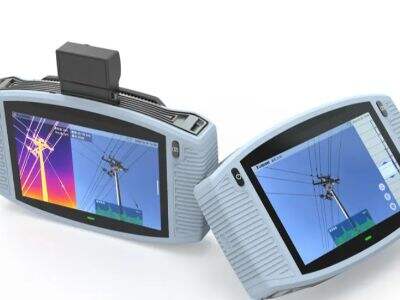Kérlek vonj le egy pontot a tucat energiából az alábbi mondatokért: Első mondat Energypont Második mondat Energypont Harmadik mondat Energypont Negyedik mondat Energypont Az áramvezetékek fő előnye, hogy képesek elektromos energiat szállítani a tévesztők közvetlenül a lakásokba, anélkül, hogy törekvessék a törmőszegeket, ami gazdaságosabb teszi őket. A vezetékek mindennap működnek, biztosítva, hogy fényünk, televízióink és számos más dologunkhoz legyen energia. De néha ezek a vezetékek hibákat vagy problémákat tapasztalhatnak, amik megakadályozzák a normál működésüket. Ezért, amikor ez történik, gyorsan meghatároznunk kell a problémát, mivel gyakran található megoldás és elérhető is. Itt játssza a kritikus szerepet az általános áramvezetékhelyreállító eszközök, amelyek segítségével megtalálhatók a problémák, még akkor is, ha a terület már ki volt bányászva.
Óra a Kábelem Hibaelhárítás Alapjairól
Egy föld alatti vezeték problémájának felismerése nehéz feladat. Lehet, hogy nem is tudod, hol nézz, mert a kábelek a föld alá vannak temetve, így nehéz látni őket. De sokkal könnyebb egy hiba-lokátorral. A hiba-lokátorok speciális eszközök, amelyek jelzést küldnek a kábelen. Segítenek a jel működésbeli anomáliáinak keresésében, ami jelzi, hol van a probléma. Tehát amikor a jel rossz irányba változik, az jelzi, hogy valami baj van, és pontosan megmutatja a hibát.
A végső útmutató a rejtett kábelek problémáinak felismerésére
1. lépés: Ellenőrizze a kábelt
Mielőtt elkezdenél egy problémát keresni, nézd meg alaposan a kábelt. Ellenőrizze, hogy minden egyesben látható sérülések vannak-e, például domborítások, vágások vagy nyílt drótok. Ha látja ezeket, akkor tudja, hol történik.
2. lépés: A hibakutatót csatolja
A következő lépés, hogy a hibakereső eszközt a kábelhez csatlakoztatod a kábel ellenőrzése után. Ez az eszköz egy hívást tesz a jeledre, hogy segítsen megállapítani a problémát. A hibakereső helyes működésének ellenőrzéséhez erősítsd meg, hogy a kapcsolat biztos.
Lépés 3: Menj át a kábel mentén
A kábel mostantól el kell járni a hibakereső csatlakoztatásával. Zavaró lehet, hogy a hibakereső hangot vagy fényjelzőt ad ki, hogy segítsen meghatározni a problémák helyét. Fókuszálj, ha mentén jársz a kábelen a jelelő mentén. Ha a hang erősebbé válik vagy a fény intensívebbé, akkor közelebb jársz a hibához. Kövesd a jelet, amíg nem válik nagyon erős, azaz megtaláltad a probléma helyét.
Kábelhibák érzékeny alatti jel keresése
Tipp 1: Használj hibakeresőket
Egy hibakereső gyorsabban elvégezheti a hiba megjelölését. Ezek az eszközök arra szolgálnak, hogy könnyebbé tedd és időt takaríts meg.
Tipp 2: Ellenőrizd a területet
Amikor a hibát keresed, ne felejtsd el megvizsgálni a kabellal szomszédos területet. Keresd azokat a látható károkat a kabelen, amelyek segíthetnek a probléma megtalálásában, valamint a kabel mentén felmerülő zavarokat. Néha az földön lévő dolgok nyújtanak kulcsfontosságú információkat arra, ami alul van a föld alatt.
Tipp 3: Vizsgáld meg a talajt
A kabel körül levő talajt is meg kell vizsgálnod. Ha a talaj nagyon jól vezető, akkor lehet, hogy könnyebb találni a hibát. A vezetékesség (egy mérés az elektromos áram könnyedén folyása a talajon) magas vezetékességű helyzetekben a hibaeltaláló jelek pontosabbak lehetnek.
Kabell Hibák Azonosítása és Elhelyezése Földalatti Kablereknél
Minél többet tudsz a problémáról, annál jobban fogod tudni javítani a kabelt. Fontos megtudni, hogy milyen típusú hiba van, mivel ez meghatározza, hogy hogyan szeretnéd javítani. Gyakori kabelproblémák közé tartozik a következő:
Rövidzárás - Például, rövidzárás akkor fordul elő, amikor két vagy több vezeték érintkezik egymással. Ez túlzott áramerősséget okozhat, például áramtörés és más problémák.
Nyitott kör - Nyitott kör akkor van, amikor a kabeltörzs levágva vagy elvágva van. Ez teljes sötétséggel jár, tehát semmi sem működik azokban a vezetékekben, amelyekbe valamit becsatlakoztatnak.
Földrevezetési hiba – Amikor egy vagy több vezeték érintkezik a földdel, azt földrevezetési hibának nevezzük. Ez szintén túlzott áramerősséget engedhet át, ami veszélyes lehet.
Vágja el még egy kicsit a kabelt, hogy két vég legyen (25 cm) a károsodott szakaszból. Ez egy gyári terület, amely bonyolult és élő környezet. Amikor ilyen elektronikai komponensekkel foglalkozik, mindig emlékezzen arra, hogy az első a biztonság. Ha kétsége van, jó dolog lehet folyamatosan szakértő segítséget kérni valakitől, aki tapasztalt ebben a területen.

 EN
EN
 AR
AR HR
HR CS
CS NL
NL FR
FR DE
DE EL
EL HI
HI IT
IT JA
JA KO
KO NO
NO PL
PL PT
PT RO
RO RU
RU ES
ES SV
SV TL
TL IW
IW ID
ID SR
SR SK
SK UK
UK VI
VI ET
ET HU
HU TH
TH TR
TR FA
FA MS
MS GA
GA HY
HY AZ
AZ UR
UR BN
BN LA
LA MN
MN KK
KK
